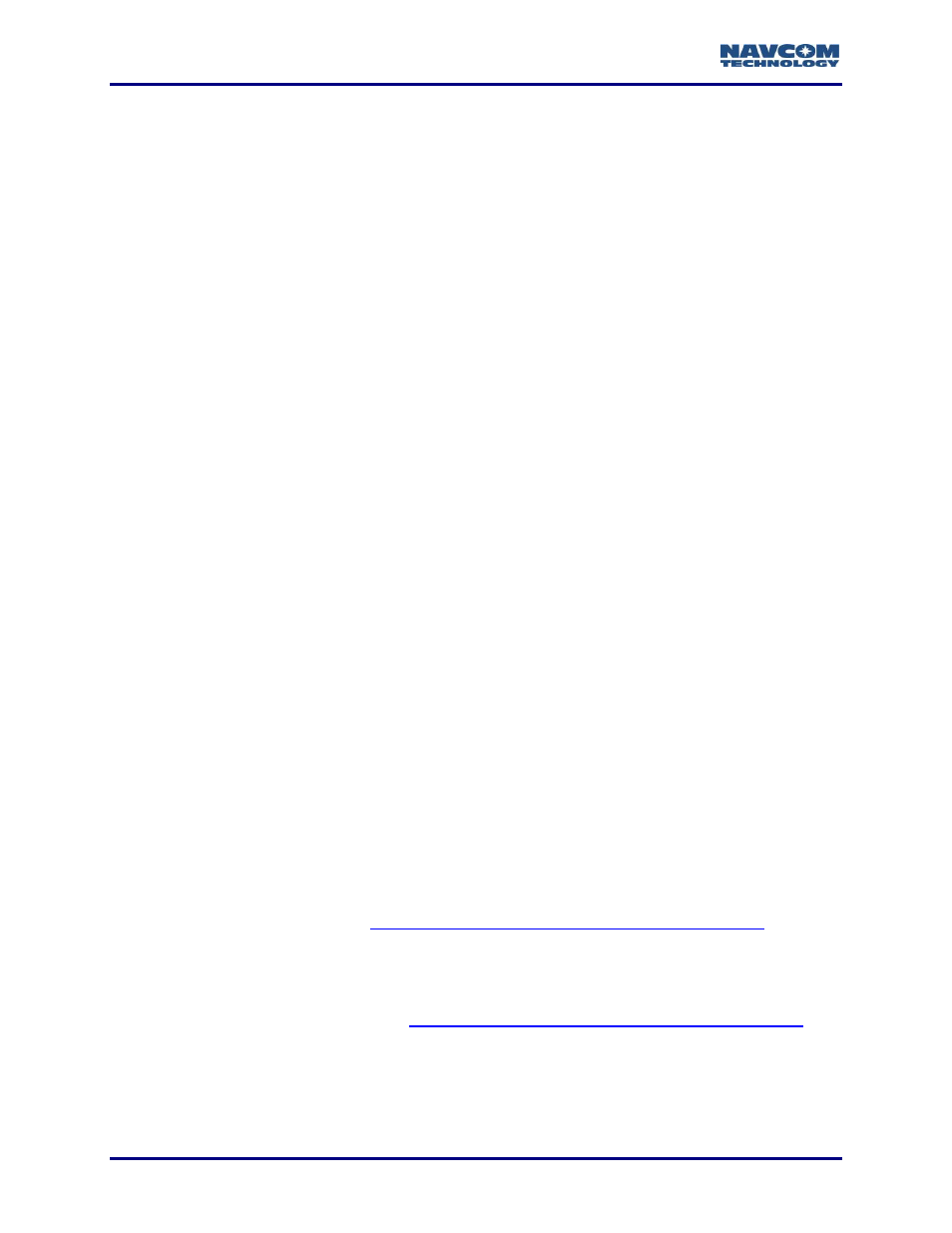Dynamics, L1fallback, Navelevmask – NavCom StarUtil-3000 Rev.G User Manual
Page 134: Navmeasuse, Pdoplimit, Prdgpstimeout

StarUtil 3000 User Guide
– Rev G
8-132
[DYNAMICS]
This command is used for specifying receiver dynamics. The setting affects the RTK rover
dynamic, the RTG dynamic, and the velocity smoothing settings.
Dynamic_mode is the receiver overall dynamic setting. When a user specifies
dynamic_mode as STATIC, LOW, MEDIUM, or HIGH, the receiver will use the
built-in settings for the RTK rover, the RTG dynamic, and velocity smoothing. No
additional parameters are needed. When a user specifies dynamic mode as USER,
additional parameters can be added to configure the RTK rover, the RTG dynamic,
and the velocity smoothing settings.
It is assumed that the receiver is navigating at a rate of 1 Hz. As a rule of thumb,
the higher the rate at which the receiver navigates, the higher the dynamics the
settings can accommodate.
Use the [GLONASSCORRECTION] command on the Input Terminal window to turn
on or off the use of GLONASS RTK corrections in rover RTK mode.
[L1FALLBACK]
This command is typically set to OFF to disable the L1 fallback (or optimized shading) option.
When L1 fallback is ON, dGPS mode precedence is set to Dual 3D Single 3D Dual 2D
Single 2D.
[NAVELEVMASK]
This command sets the lowest elevation, in degrees, at which a receiver uses a satellite in the
navigation solution, measured from the horizon to zenith, 0º to 90º.
Base: The recommended setting for the base receiver is 5 degrees, [NAVELEVMASK]5.00.
However, the height of on-site obstructions will dictate this setting. Collecting poor data (i.e.
through trees) at the base will degrade the performance of the rover. For any satellites
below the angle set for the base, no data will be transmitted to the rover for use in
calculating positions.
Rover: The recommended setting for the rover receiver is 7 degrees, [NAVELEVMASK]7.00,
to prevent position jumps due to frequent satellite re-acquisitions at lower elevation mask
angle limits.
As a general rule, NavCom recommends that the rover mask be set 2 degrees
higher than the base mask. This allows for better filter performance.
[NAVMEASUSE]
This command is used to enable or disable the receiver’s use of various signals or frequencies
for navigation. Refer to Chapter 6/
Typical Commands and Parameters In User Profiles
information.
[PDOPLIMIT]
This command sets the maximum Position Dilution Of Precision (PDOP) allowed for a valid
navigation solution. Refer to Chapter 6/
Typical Commands and Parameters In User Profiles
more information.
[PRDGPSTIMEOUT]
This command sets the dGPS correction timeout (age limit) for specific code-based
(pseudorange) differential GPS navigation modes. When communication with the base station is
